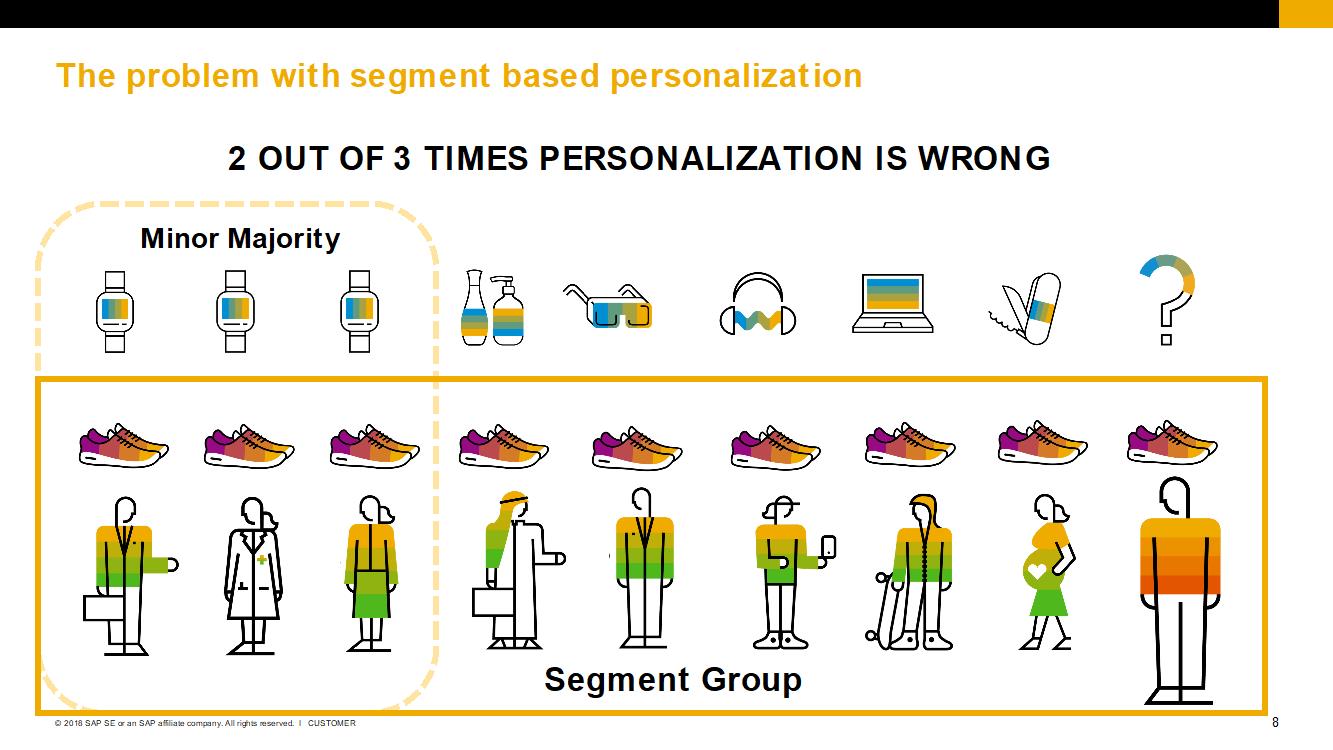Personalization. Personalization. Personalization.
“Be sure to personalize the content you create and send to customers.” We’ve heard it time and time again. But it is 2018 now, and personalization doesn’t mean what it used to ten, five, or even three years ago.
There’s been a marketing evolution, and personalization has evolved into what I, and many others, call “individualization.”
Say what?
Individualization? What does that even mean?
In the past, when marketers personalized an email, it would say “Dear Jane,” and show offers for women’s clothing. Before personalization, the email would just read “Dear Valued Customer,” and display offers for clothing for both men and women.
Now, just using someone’s first and last name in a communication doesn’t cut it anymore.
Individualization means sending relevant content based on the actual individual, not a segment group he or she falls into. When marketers personalize based on segments, everyone who is either female, or from a particular city, or in a certain age range would receive specific offers.
Today when marketers create an individualized email, it displays offers based on personal past purchases and browsing history. These emails no longer display all the products relevant to 24-32-year-olds, but rather display offers and products relevant to an individual customer who is female, 30-years-old, enjoys biking and running, was browsing for workout clothes online, and just purchased a pair of running shoes.
Here’s a great example of practicing individualized marketing vs. segment-based personalization:
Let’s say you purchase a pair of running shoes from a retailer. Based on this purchase and your overall profile, you are segmented into a similar group of customers that purchased the same running shoes.
Let’s say that members of your segment group, the minor majority (in this case three out of nine people) purchased a watch as their next product. The remaining six out of the nine purchased various other products.
Based on the minor majority, the personalized product recommendation will be the watch.
And if you do a count with this segment-based personalization, the recommendation is incorrect six out of nine times. This is a simple example, but to be more realistic, consider a larger group, say 10,000 customers in a segment group and a minor majority of 1,000 who purchase the watch.
This means that the personalization was incorrect 9,000 times. 90% of the time, your personalization was wrong!

True personalization is achieved when a customer is seen as an individual and is based on individualized information. The key is to gain better insights into individuals’ behavior to truly know their interests and better understand their intents.
Marketers who can capture customers “in the moment” with relevant content and offers will see a positive lift as a result.

